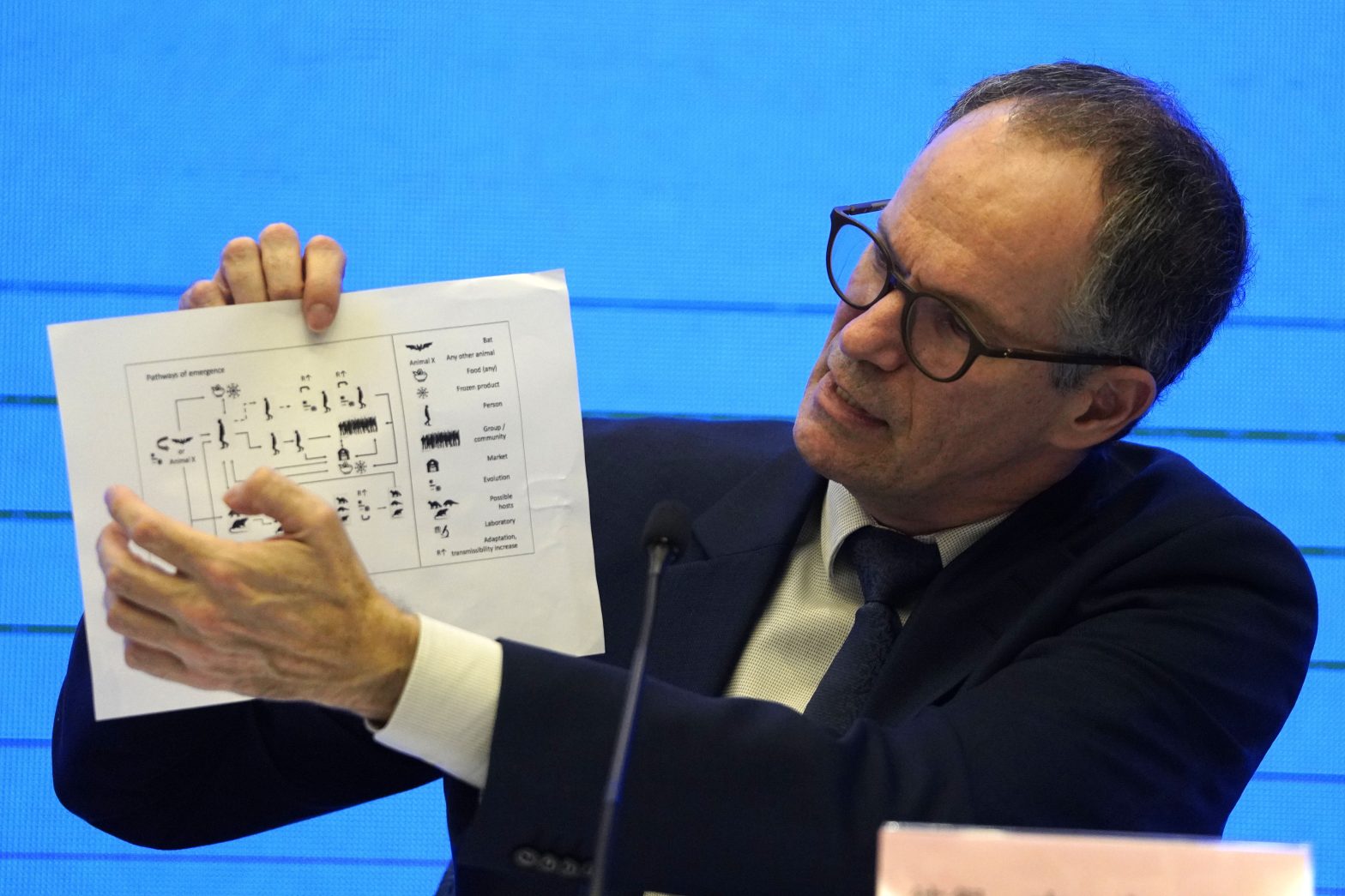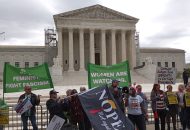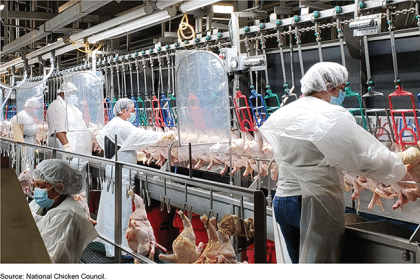WHO Report Says Animals Likely Source of COVID

BEIJING (AP) — A joint WHO-China study on the origins of COVID-19 says that transmission of the virus from bats to humans through another animal is the most likely scenario and that a lab leak is “extremely unlikely,” according to a draft copy obtained by The Associated Press.
The findings offer little new insight into how the virus first emerged and leave many questions unanswered, though that was as expected. But the report does provide more detail on the reasoning behind the researchers’ conclusions. The team proposed further research in every area except the lab leak hypothesis.
The report, which is expected to be made public Tuesday, is being closely watched since discovering the origins of the virus could help scientists prevent future pandemics — but it’s also extremely sensitive since China bristles at any suggestion that it is to blame for the current one. Repeated delays in the report’s release have raised questions about whether the Chinese side was trying to skew its conclusions.
“We’ve got real concerns about the methodology and the process that went into that report, including the fact that the government in Beijing apparently helped to write it,” U.S. Secretary of State Antony Blinken said in a recent CNN interview.
China rejected that criticism Monday.
“The U.S. has been speaking out on the report. By doing this, isn’t the U.S. trying to exert political pressure on the members of the WHO expert group?” asked Foreign Ministry spokesperson Zhao Lijian.
The report is based largely on a visit by a WHO team of international experts to Wuhan, the Chinese city where COVID-19 was first detected, from mid-January to mid-February.
In the draft obtained by the AP, the researchers listed four scenarios in order of likelihood for the emergence of the coronavirus named SARS-CoV-2. Topping the list was transmission from bats through another animal, which they said was likely to very likely. They evaluated direct spread from bats to humans as likely, and said that spread through “cold-chain” food products was possible but not likely.
Bats are known to carry coronaviruses and, in fact, the closest relative of the virus that causes COVID-19 has been found in bats. However, the report says that “the evolutionary distance between these bat viruses and SARS-CoV-2 is estimated to be several decades, suggesting a missing link.”
It said highly similar viruses have been found in pangolins, which are another kind of mammal, but also noted that mink and cats are susceptible to the COVID-19 virus, suggesting they could be carriers, too.
The AP received the draft copy on Monday from a Geneva-based diplomat from a WHO-member country. It wasn’t clear whether the report might still be changed prior to release, though the diplomat said it was the final version. A second diplomat confirmed getting the report too. Both refused to be identified because they were not authorized to release it ahead of publication.
WHO Director-General Tedros Adhanom Ghebreyesus acknowledged that he had received the report over the weekend and said it would be formally presented Tuesday.
“We will read the report and discuss, digest its content and next steps with member states,” Tedros told a news conference in Geneva. “But as I have said, all hypotheses are on the table and warrant complete and further studies from what I have seen so far.”
He declined to comment on whether political pressure had influenced the report.
The draft report is inconclusive on whether the outbreak started at a Wuhan seafood market that had one of the earliest clusters of cases in December 2019.
The discovery of other cases before the Huanan market outbreak suggests it may have started elsewhere. But the report notes there could have been milder cases that went undetected and that could be a link between the market and earlier cases.
“No firm conclusion therefore about the role of the Huanan market in the origin of the outbreak, or how the infection was introduced into the market, can currently be drawn,” the report said.
The market was an early suspect because some stalls sold a range of animals — and some wondered if they had brought the new virus to Wuhan. The report noted that a range of animal products — including everything from bamboo rats to deer, often frozen — were sold at the market, as were live crocodiles.
As the pandemic spread globally, China found samples of the virus on the packaging of frozen food coming into the country and, in some cases, have tracked localized outbreaks to them.
The report said that the cold chain, as it is known, can be a driver of long-distance virus spread but was skeptical it could have triggered the outbreak. The report says the risk is lower than through human-to-human respiratory infection, and most experts agree.
“While there is some evidence for possible reintroduction of SARS-CoV-2 through handling of imported contaminated frozen products in China since the initial pandemic wave, this would be extraordinary in 2019 where the virus was not widely circulating,” the study said.
The report cited several reasons for all but dismissing the possibility the virus escaped from a lab in Wuhan, a speculative theory that was suggested and promoted by former U.S. President Donald Trump among others.
It said such laboratory accidents are rare and the labs in Wuhan working on coronaviruses and vaccines are well-managed. It also noted that there is no record of viruses closely related to SARS-CoV-2 in any laboratory before December 2019 and that the risk of accidentally growing the virus was extremely low.
___
Keaten reported from Geneva. Associated Press Science Writer Victoria Milko in Jakarta, Indonesia, and Frank Jordans in Berlin contributed. The AP Health and Science Department receives support from the Howard Hughes Medical Institute’s Department of Science Education. The AP is solely responsible for all content.

























